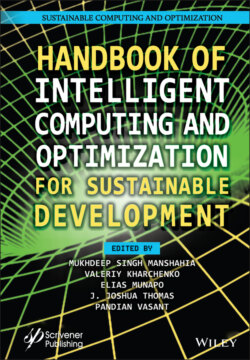Читать книгу Handbook of Intelligent Computing and Optimization for Sustainable Development - Группа авторов - Страница 122
5.2.4 Millimeter Wave
ОглавлениеThe mmWave communication serves as a promising solution to improve the spectral efficiency and the problem of shortage of frequency resource [42]. Many applications are related to mmWave communication such as beamforming, precoding, and channel estimation. Power allocation are used for mmWave with non-orthogonal multiple access (NOMA)–related applications. The blockages when mmWaves are being used are generally high because of their short range. Those blockages tend to disrupt the signal strengths and signal quality. A multi-layer perceptron (MLP) DL model is used to predict these blockages caused [43]. The mmWave channel has a sparse nature by which instead of beam searching completely, the alignment of beam can be done which reduces the need of more channel measurements [44]. When it comes to massive MIMO, many more antennas are involved. So, the problem of channel detection or channel estimation becomes more critical as the traditional methods are utilized. Channel estimation for mmWave communication is challenging because of the huge training overhead and strict constraints on RF chain usage because of the requirement of large number of transmitter and receiver antennas [45]. A MLP-based channel equalization technique has been proposed in [46]. The CSI is generally obtained by the user in the downlink and its feedback to the transmitter in uplink. Even though the process seems to be simple the problem arises as more antennas are involved in massive MIMO systems. The increased overhead during feedback causes the time lag when being processed at transmitter side. A CNN-based feedback for CSI is developed in [20] to address this issue. MLPs are basic feed forward NNs used for classification and detection tasks. A CNN, on the other hand, was developed for classification of images but now used in wireless communication as well. Before the use of complex convolutions, most of the problems related to DL and ML have used real operations. These convolutions have proved to give increased performance even in the presence of noise and are easy to represent. The imaginary phase component present here is very important in signal processing. It is sufficient to recover information pertaining to the magnitude part. It also provides description about the shape, orientation of the objects. Parallel complex convolution blocks and its counterparts are defined and explained in [47].
